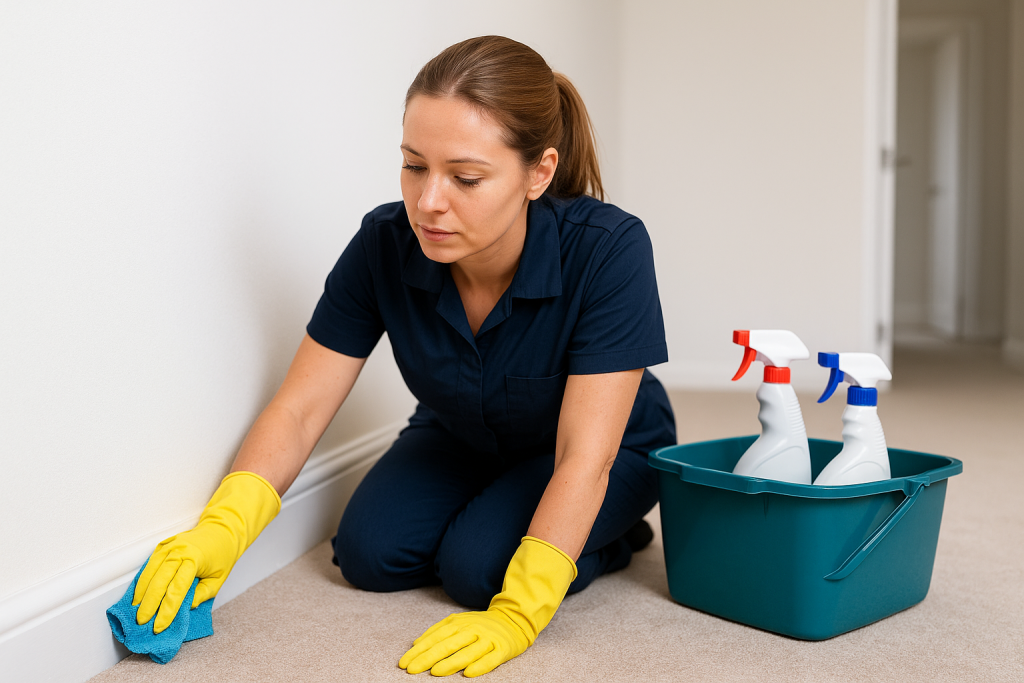
When it comes to moving out of a rented property, most tenants focus on packing boxes, redirecting mail, and organising the logistics of their new home. Yet, one critical factor can make or break the return of a tenant’s deposit: end of tenancy cleaning. Often overlooked or underestimated, this step is the silent dealbreaker that determines whether a tenancy ends on a high note or a stressful, costly low. Landlords and letting agents conduct meticulous inspections, and cleanliness is one of the most scrutinised elements.
What Is the Professional End of Tenancy Cleaning?
Professional end-of-tenancy cleaning is a comprehensive, deep cleaning service designed specifically for rental properties at the end of a lease. Unlike standard weekly tidying, this service goes beyond surface cleaning. It includes meticulous attention to every corner, appliance, fixture, and fitting to ensure the property matches the condition it was in at the start of the tenancy. Professionals use industrial-grade products and follow a systematic checklist tailored to agency inspection standards, leaving no detail overlooked.
Deposit Protection Schemes and Cleanliness Compliance
In the UK, all assured shorthold tenancy deposits must be protected under a government-approved Deposit Protection Scheme. When the tenancy ends, the deposit is only returned if the landlord agrees that the property has been left in acceptable condition. One of the top reasons for deposit deductions is inadequate cleaning. A single overlooked area—like a greasy oven or limescale-covered taps—can result in withheld funds. Professional cleaning minimises this risk by ensuring the property complies with cleanliness expectations outlined in the tenancy agreement.
DIY vs. Pro: Why Tenants Often Fall Short with DIY Cleaning
While it may seem economical to clean the property yourself, DIY efforts rarely meet the high standards required by landlords and agents. Household cleaning products and casual routines don’t typically address built-up grime in hidden spots, stubborn carpet stains, or deep-seated odours. In contrast, professionals are trained to deliver results that satisfy even the strictest inventories. Attempting to clean without the proper tools or experience can end up costing tenants more if re-cleaning is required or if deposit deductions are applied.
Hidden Areas That Professionals Never Miss
Certain areas in a rental property are routinely missed during tenant-performed cleans, but landlords and agents almost always check them. These include:
- Inside the oven, including trays and racks
- Behind the toilet and under bathroom sinks
- Inside and under kitchen appliances
- Skirting boards and door frames
- Ventilation grills and extractor fans
- Light switches and socket plates
Professional cleaners know exactly where dirt hides and address every detail to prevent failed inspections.
Time-Saving Advantages for Tenants
End of tenancy cleaning can take anywhere from 4 to 10 hours, depending on the property size and condition. For tenants juggling a full-scale move, job relocation, or family commitments, this can be overwhelming. Hiring a professional cleaning service eliminates that burden. It frees up valuable time and energy while ensuring the property is cleaned efficiently and effectively. It’s one less thing to stress about during an already chaotic transition.
Avoiding End-of-Tenancy Disputes with Peace of Mind
Disputes over cleanliness are among the most common sources of friction between tenants and landlords at the end of a lease. By opting for a professional clean, tenants gain not only a spotless property but also peace of mind. Most companies provide a detailed invoice and a checklist of tasks completed—clear evidence that professional standards were met. This documentation can be invaluable if any disagreements arise during deposit negotiation.
The Cost Factor: Why It’s Worth Every Penny
While professional cleaning comes with a price tag, it’s an investment that usually pays for itself. The average cost of end of tenancy cleaning is significantly less than the typical deposit held on a property. In fact, the amount saved by securing a full deposit return often outweighs the initial service fee. More importantly, it spares tenants from the hassle of re-cleaning, dispute resolution, or forfeiting hundreds of pounds over minor oversights.
What’s Included in a Pro End of Tenancy Cleaning Service?
Professional end of tenancy cleans usually follow a detailed, room-by-room checklist that includes:
- Full kitchen deep clean, including oven, hob, and extractor.
- Fridge and freezer defrosting and sanitisation.
- Descaling of bathrooms, including toilets, sinks, and showers.
- Internal window washing and mirror polishing.
- Dusting of all surfaces, skirting boards, and fittings.
- Carpet vacuuming or steam cleaning.
- Cleaning inside cupboards, drawers, and wardrobes.
It’s a full-scale operation that leaves no surface untouched.
Carpet, Upholstery, and Appliance Cleaning
Carpets and upholstery can absorb odours, dust, and stains over time, which might go unnoticed until a final inspection. Many landlords now expect carpets to be professionally cleaned—especially in furnished properties or homes with pets. The same goes for appliances like ovens, microwaves, washing machines, and dishwashers. These are not typically covered in general cleaning and require extra effort to meet cleanliness standards. Adding these services to your end of tenancy clean helps ensure nothing is left to chance.
Custom Services for Furnished and Unfurnished Properties
Every rental property is different. Furnished homes require more intensive cleaning due to the additional surfaces—sofas, mattresses, curtains, and more. These require vacuuming, spot-cleaning, and sometimes steam treatment. Unfurnished properties, while generally faster to clean, still require comprehensive attention to fixtures, floors, and walls. Many cleaning companies customise their services based on the property type, layout, and contents, ensuring you only pay for what you need.
